
 |
| Homepage • Products • Contacts Us |
Steve's Velomobile Project
The Beginning of Velomobile Project
This project started out with the goal of making a replacement fairing for my Vision recumbent as I had a couple of crashes with the thermoformed fairing and I thought it might not survive another one. The first attempt for the Vison fairing was a bit too narrrow and I was playing with the idea of having a recess in the front of the fairing to make it easier to see the road. The second was an improvement but did not offer much more protection.
The reason I was using the fairing is that on my ride to work I start out on a hill and the first few minutes are normally quite cool with the wind chill and then moderate terrain where one can warm up a bit. I was thinking of building a more enclosed fairing to help with this issue and as a result got interested in velomobiles. Then, what finally got me going on this was that we bought a trike, a Hase Kettwiesel, which could make a reasonable base for the more extensive fairing.
The first attempt at the fairing for the Kettwiesel has been quite instructive. It looks as if we can build a fairing that will weigh in well under 20 pounds if vacuum bagged using just fiberglass materials and some core. If we change the laminate to grapite/kevlar/core and vacuum infuse it a weight in the 10-15 pound range should be possible. The first prototype fairing weighs 16.2 pounds but it needs to be a bit longer in the nose to completely enclose the front wheel and have a bit more volume at the back to carry a bit more gear; and it could be a bit more streamlined). The laminate used for this part was not stiff enough so more material was added by hand laminating some stiffeners in place. With a more optimized laminate (some core in the flat areas) all bagged at once, a bit thinner gel coat, lighter rim around the opening, even with the extra surface area at either end a weigh around 16 pounds is still possible. This would probably be strong enough to survive everyday use and not be too fragile. There is room inside the fairing to either strap in gear bags beside/in front of the rider and behind the seat. Rigid moulded in panniers beside and in front of the cylist are possible but would add a bit of weight.
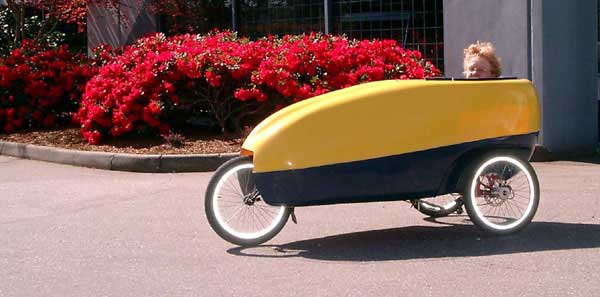
Jan on her trike with the first prototype fairing
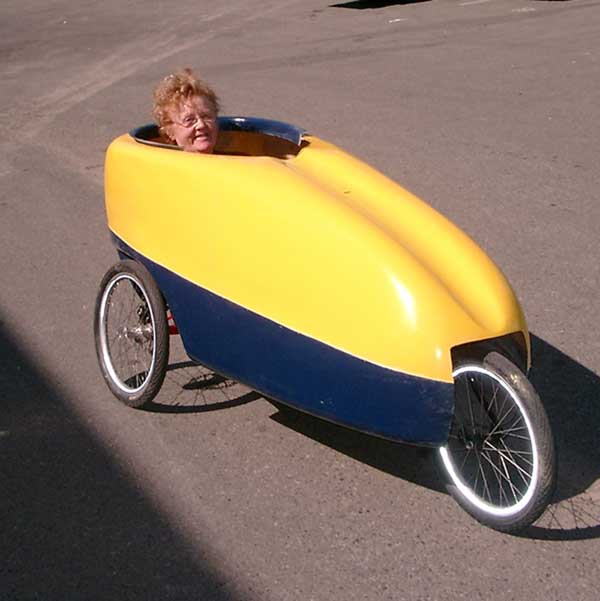
First prototype front view, note the rim cut away to allow the opening to be bigger for getting in and out
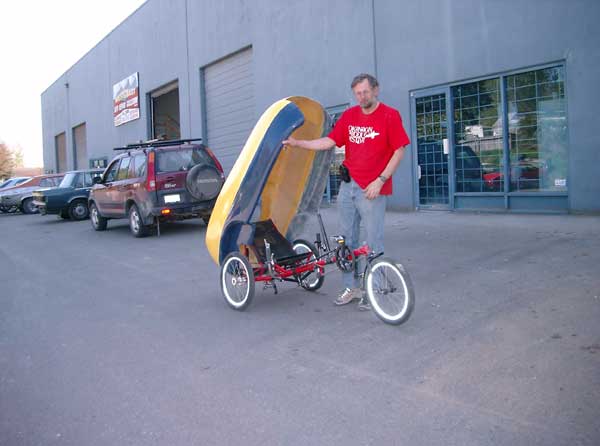
Steve getting in
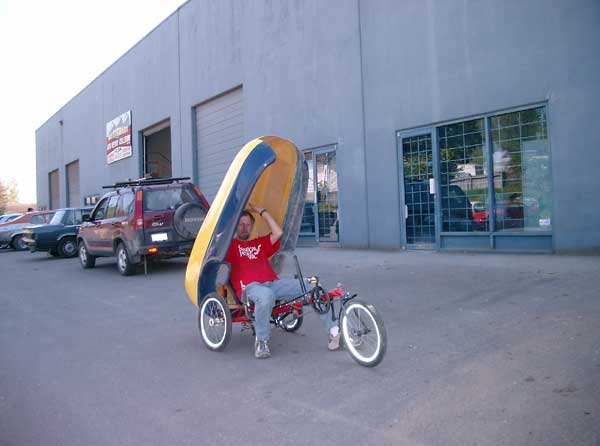
Closing fairing
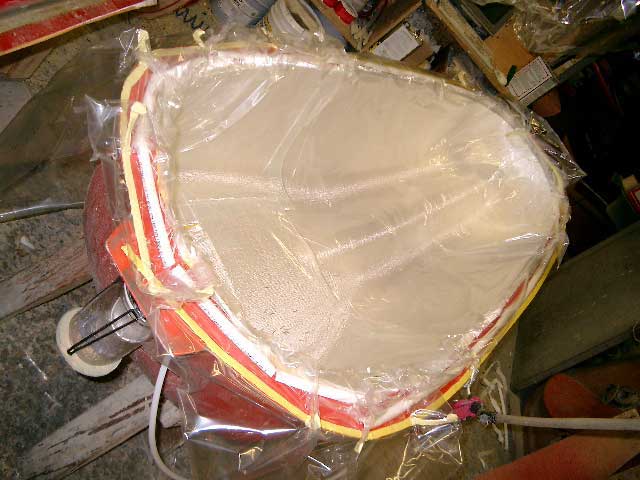
The above picture shows the top half mould with all and material in the mould and the nylon bag sealed on the mould.
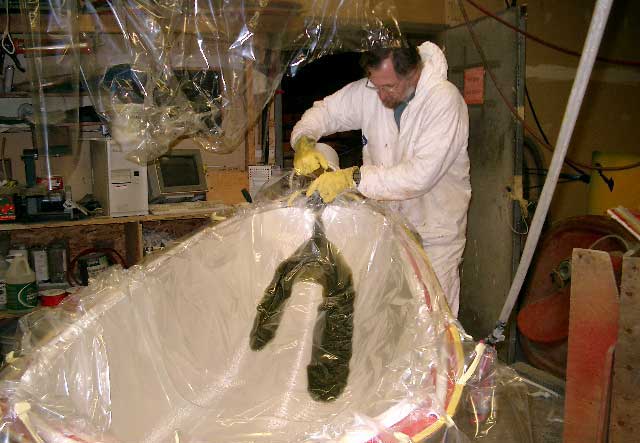
The bag in opened and the vinyl ester resin is introduced under the bag, then the bag is sealed and vacuum is then applied
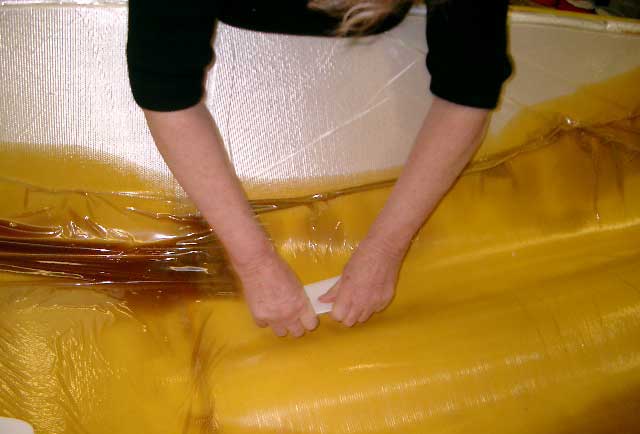
Vacuum applied, moving the resin under the bag to help the vacuum saturate the laminate with resin. We build our kayaks using this process and have laminates that are 60-70% fibre content. This is the optimal fibre/resin content for FRP laminates. We can incorporate some of the new core materials meant for resin infusion using this process and can do it in a single laminating step resulting in very stiff light parts at moderate prices. Only epoxy prepregs offer better results but typically cost several times as much to make.
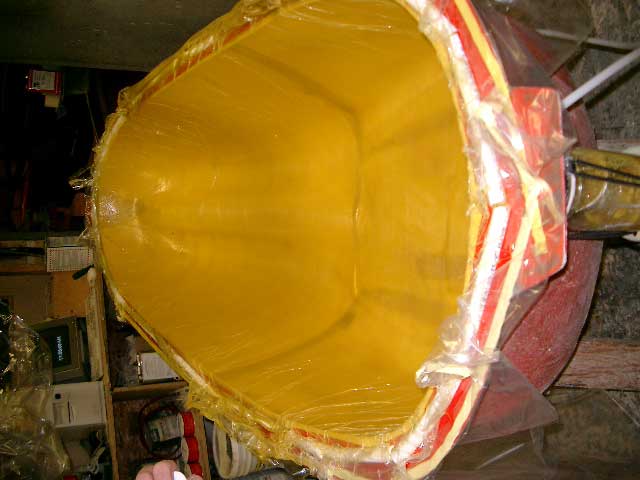
Finished part just after bagging, one must maintain vacuum until the resin has set.